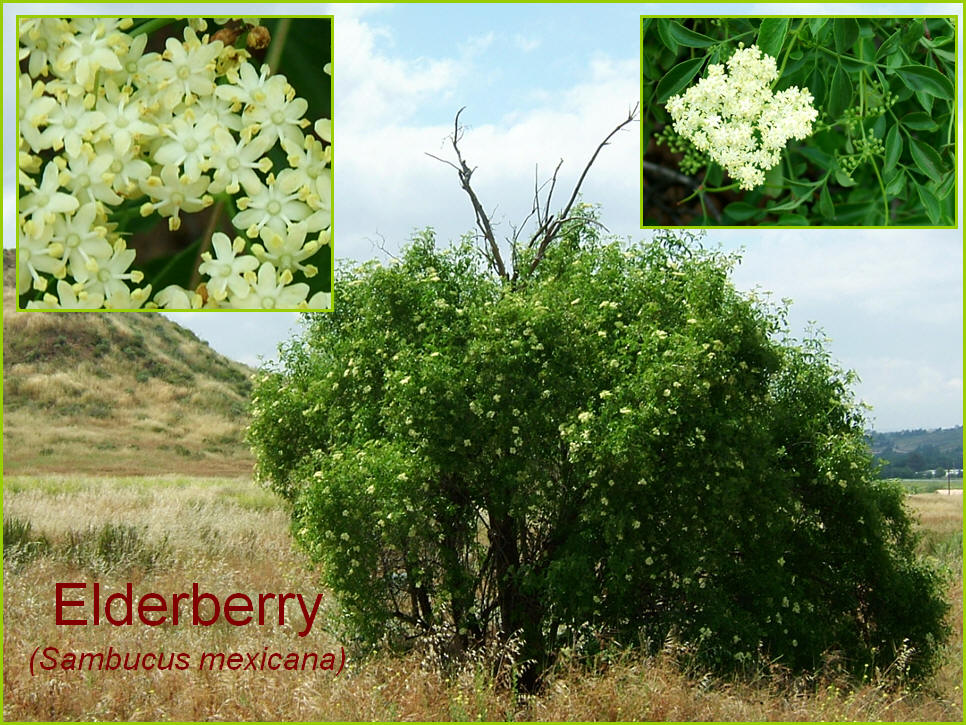

Description:
When given sufficient water and some shade
during the heat of the day this upright brushy plant will grow to
In the spring it is laden with flat-topped, tight clusters of pale-yellow flowers and may continue to put out a few blooms until mid-summer. The flowers are followed by clusters of bright green berries that may change color to a deep purple when they ripen. In some plants the berries stay green through ripening. In either case the berries become covered with a fine coating of milk-white tartaric acid, the same substance that forms on plums and grapes and is used as a stabilizer in beaten egg whites. |
|
| Uses:
The elderberry bush is a veritable general store, meeting many human needs and supplying food and medicine as well as musical accompaniment for prayer and merriment. |
|
|
Food and Medicine: The blossoms (fresh or dried) can make a pleasant tea that will settle an upset stomach (Saubel).
The tea can be finely strained and used as sterile soothing eyewash (Saubel).
The blossoms can be picked fresh and dipped in batter and fried to make fritters (E. Dozier).
The berries can be collected and made into wine (Herbert) or jelly (E. Dozier).
They make a delicious but seed-filled hand pie. The berries can be half-dried and then pounded and formed into cakes and fully dried sun dried (Saubel). |
|
|
Other Uses: Elderberry leaves can be combined with rusty nails and water. When boiled and allowed to stand until the water turns jet black, the strained liquid makes a fine, black, acid dye.
Branches from which the thick
central core of pith has been removed and about 1 ¼ “ diameter were harvested
for making a musical instrument called a clapper stick.
The bark was removed and the remaining tube was
cut in half longitudinally about 2/3 of the length of the branch.
The intact end was then wrapped as a handle and
the stick was hit against the palm of the hand to produce a clapping sound.
This percussion instrument was used for both
social and sacred songs, but not by everyone.
|
|
|
|
|
| Locator: East side of Comet Circle between the PE building and the road. |